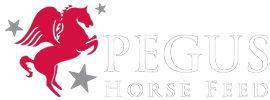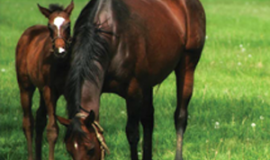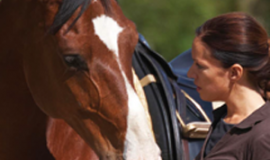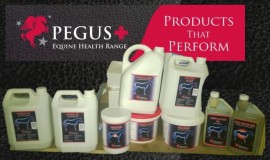Most horses have some type of compound feed included in their daily ration. This is mainly to supply additional energy, protein, vitamins and minerals. Of special interest with horses is the type of feed ingredient providing the energy . It makes a difference if the energy substrate is starch, fat or fibre. Feed manufacturers often have a wide range of compound feeds that vary in composition and nutrient content. Therefore, it is important for the horse owner to be able to make informed choices about the product that best meets…
Pegus News
The young horses demand of calcium
When a young horse starts to train we must make sure it receives enough calcium to support the development of its bones. Young horses are commonly put into training after the end of the grazing season. Young trotters and thoroughbreds will usually be around 18 months old when training starts, while riding horses are one year older. After happy days and 24-hour activity in the summer months, very different living conditions await the young horse when it is stabled. This is usually individually and in boxes, with limited access to…
Fibre in horse feed
Fibre in Horse Feed The horse is a grass-eating herbivore and its digestive system is adapted to rations that consist mainly of roughage, i.e. grasses and herbs, either fresh or as hay or haylage. Roughages are rich in fibre and the horse needs this fibre for both energy and as a structural component to ensure proper functioning of the digestive system. Fibre-rich diets require a long time for chewing, keeping the horse occupied and increasing the time needed to consume a meal. This is important for the horse’s comfort and…
It’s time to make plans for the upcoming breeding season.
It’s time to make plans for the upcoming breeding season. Spring will soon be here, most owners wanting to breed a horse will be soon deciding what stallion they want to use for their mare. If you’re brood mare is pregnant and expecting a foal in the spring, you should inform your chosen insemination centre of your mare’s expected foaling date. Agreement must be reached with the stud owner concerning transport of the mare before foaling and return afterwards with the foal or, if the mare is to foal at…
Adjusting rations for mares in late pregnancy
Adjusting rations for mares in late pregnancy At this time of year, many pregnant mares are in their last months of pregnancy. The foetus now increases its growth rate and demands more nutrients to support that growth. The mare has to deliver these nutrients to her foetus and her ration will have to be adjusted accordingly. Foetal growth In the first 7 months of pregnancy, the foetus grows moderately and only reaches about 20% of its final birth weight. This means that the mare’s nutrient requirements in this period changes…
Cobalamin (Vitamin B12)
Cobalamin (Vitamin B12) B-vitamins are a group of 8 water soluble vitamins that play important roles in cell metabolism. They cannot be produced by the body itself, but can be produced by bacteria, fungi and plants. In the horse, microorganisms in the gut, mainly the hind gut, are capable of synthesizing B-vitamins. Nutrient requirements have so far only been well established for thiamin (B1) and riboflavin (B2). Function Vitamin B12 performs a wide variety of functions in the body. It is a component of several enzyme systems, most of which…
Job Opportunity Sales Person for Munster ,South Lenister & Scotland
Pegus Horse Feed, one of the most recognized brands in the equine feed and nutrition sector in Ireland and Europe , are currently looking for professional Individuals to join our nationwide team of sales executives to be part of this progressive company. The role will involve maintaining a high standard of customer service & sales, generating new business opportunities and account management. Meeting & exceeding set sales targets within this area by supporting an existing distribution network & client database. Main Responsibilities to include: · Generating new sales opportunities ·…
The maintenance requirement for energy
We often use the term “maintenance requirement” believing its meaning to be well understood by most horse people. We might, however, speculate as to what extent this is true. Today most horses are owned, used and fed by people with little or no connection to farming practice or theoretical knowledge about their horse’s nutritional requirements, and how this is to be calculated. Maintenance requirements can be described as the nutrients needed to maintain a body in a steady state. This means that the animal should no longer be growing nor…







